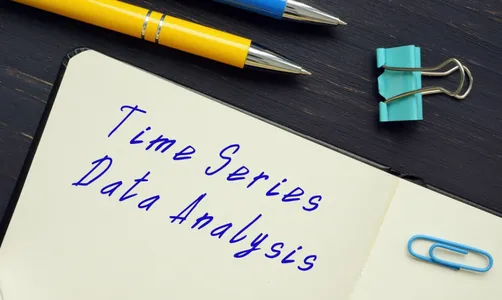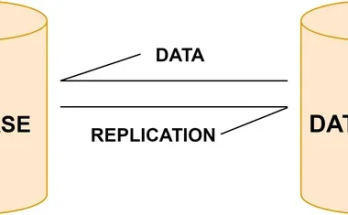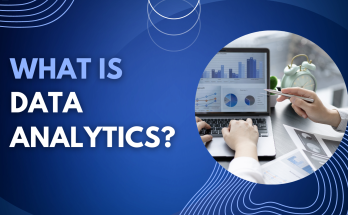Introduction
Welcome to my first post of Timeseries Data Blogs. In the modern world, an important piece of the data generated every day surrounds us and has the form of time series. Data from a series of time is usually produced at regular intervals and are organized sequentially. So in this article, let’s see how to make the time series forecast.

It is used in various industries, including Industrial Engineering, Finance, Economics and Health Care. Data analysis of the time series can be used to generate forecasts, find patterns, trends and anomalies, as well as to detect trends and patterns. Let’s start from Basic knowing what the term exactly time means.
This article has been published as part of the Data Science Blogathon.
Table of contents
What is the time series?
A series of time is a collection of data elements that are periodically registered and arranged in chronological order. Time series data can be used to examine it as a certain variable varies over time and foresees future patterns. Examples of data from the time series include stock prices, weather information, sales numbers and website traffic. To obtain a significant view of the data, temporary series analysis uses a variety of statistical approaches, including trend analysis, seasonal analysis and forecast. Time series data are extensively used in many disciplines, including finance, economy, engineering and social sciences.
To estimate the future values of a variable based on your previous behavior, the time series data forecast includes the use of statistical models and procedures. The forecast of temporary series aims to locate patterns and trends in historical data and use this knowledge to generate future forecasts.
For the forecast of temporary series, they use a variety of methods and models, some of which include:
- Simple mobile average.
- Exponential softening.
- Arima.
- Prophet.
- Lstm.
The aforementioned models are very basic for the provision of time series data and may not get a high precision in the prediction. In addition to this, several more advanced machine learning models can help you get high precision predictions and low MAE, MSE, RMSE and MAPE.
The precision of the models is evaluated by means of performance metrics. The particular application and demands of the planned variable will determine the performance measures to be used. For the forecast of time series, the following performance metrics are frequently used:
- The average absolute difference between the data provided and the real ones is calculated by means of the average measure of absolute error (MAE). It serves as a meter for the size of the forecast errors.
- The average square error (MSE), which measures the average of the square discrepancies between the predicted and the real values, is a measure of the error. It serves as a meter for the typical magnitude of forecast errors.
- Average root square error (RMSE): This metric calculates the square root of the MSE and evaluates the average magnitude of the prediction errors.
- The average absolute percentage error (map) calculates the average absolute percentage difference between the predicted and the real values. When the magnitude of the expected variable is not constant throughout the data set, it is useful.

This was the performance metrics that help evaluate the models. Now we should know the basic difference between the Timeseries Database and the Normal Data Set, although we have to predict values, that is, the forecast, now some factors may vary.
A data set of the time series includes temporary arrangement of data points, which is the main distinction between it and a normal data set. In other words, a time set of data series contains data points that are constantly separated by minutes, hours, days, months or years.
A seasonal patterns, trends and fluctuations analysis can be done using the time -dependent structure resulting from the temporary arrangement of data points in a time series data set. However, data points in a normal data set can be thought of as independent and evenly distributed because it lacks this time -dependent structure.
Difficulties facing temporary series forecast
Forecast in time series data is quite difficult because it includes several factors:-
- The complexity of the data
Numerous trends, seasonal patterns and other temporary structures can complicate the data of the time series. It can be difficult to detect and model the underlying patterns in the data due to their complexity.
Time series data can be non -stationary, which means that the statistical features of the data can change over time. This can cause the use of established methods and forecasting models that depend on the season’s challenge.
Time series data may contain outliers or other unusual occurrences that substantially affect forecasts. It may be a challenge to detect and model these outliers, especially whether they are unusual or unexpected.
The missing values in the time series data can cause them to use certain predictive methods and models that require challenging whole data sets.
Making forecasts on uncertain future events is a part of the time series forecast. Due to this uncertainty, it may be difficult to evaluate the precision of forecasts, which can result in erroneous conclusions.
Time series data may have little accessible historical data, which makes it difficult to detect long -term trends and patterns in data.
Time series forecast models and methods have a wide variety, each has advantages and disadvantages. No model works for all data sets; Therefore, select the right one can be difficult.
To fulfill these obstacles, data prostitution, exploratory data analysis and model choice are needed. It also calls for understanding the underlying mathematical and statistical principles of the time series and a preparation to modify and improve the models when available new information.
Last Time Series Forecast Application Application In the Real World
In many different disciplines, including finance, economy, engineering, social sciences and environmental studies, the forecast of time series has a wide range of applications. Here are some typical time series forecasting cases in use:

- Financial forecast: it provides for future prices for actions, exchange rates and other financial factors by foreseeing time series. Financial risk management also uses predicting the likelihood of financial crises and other occurrences.
- Preventing future sales of goods and services is essential for production programming and inventory control. Time series forecast is used to do so.
- It is used to predict the demand for electricity, gas and oil. This information is crucial for organizing and controlling energy production and distribution.
- It is used in meteorology to prevent weather patterns, such as temperature, precipitation and wind speed, which is crucial to organizing transportation, emergency management and agricultural activities.
- In epidemiology, the forecast of temporary series is used to predict the outbreaks of diseases and their transmission, which is essential for the planning and response of public health.
- Transportation planning and traffic management depend on the ability to predict the volume of traffic and congestion by forecasting time series.
- It is used to anticipate environmental variables, such as air and water quality, which is crucial to managing natural resources and preserving public health.
Conclusion
These are just a handful of numerous uses while doing time series data analysis. In general, it is useful as long as it is necessary to extrapolate the future values of a variable of the past data.
In the following blog, we will talk specifically about the last difficulty, which is the selection of models. We will explore different models and methods for carrying out the same analysis.
The means shown in this article are not owned by Analytics Vidhya and are used at the discretion of the author.


